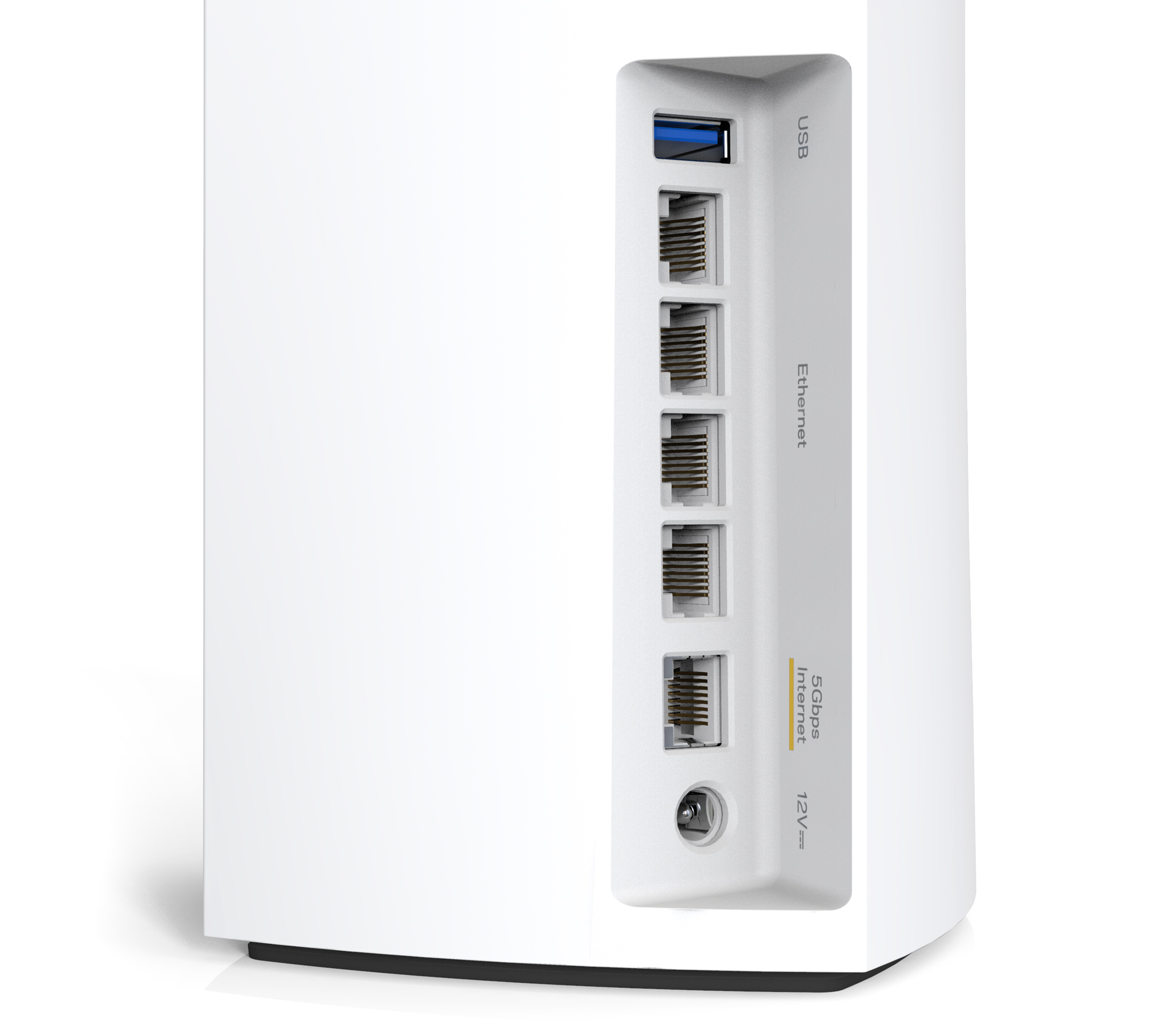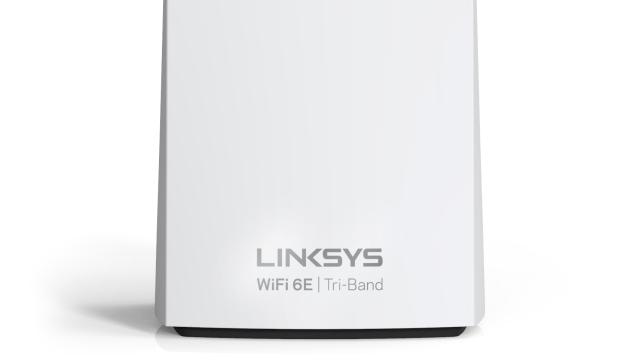Every year at CES there’s a new buzzword generously thrown around: last year it was 5G, and for 2021 it’s going to be Wi-Fi 6E. If you’ve recently upgraded to a Wi-Fi 6 router that’s really unfortunate because 6E promises to genuinely fix a lot of the bottlenecks caused by overcrowded Wi-Fi networks. Netgear has already announced the first Wi-Fi 6E router, but it looks like Linksys is the first with a 6E mesh solution.
If you’re unfamiliar with what makes Wi-Fi 6E better than Wi-Fi 6, take a moment to read our explainer in the Netgear Nighthawk RAXE500 announcement. If you don’t have the time to click (who can blame you?), Wi-Fi 6 was introduced with some clever engineering workarounds to allow more devices to crowd onto the 2.4 GHz and 5 GHz bands currently in use for Wi-Fi but with less interference to increase the wireless performance of a network.
But with more and more smart and connected devices entering our homes, Wi-Fi 6 is really only a temporary solution to the problem of overcrowded networks. Wi-Fi 6E promises to be a longer-term solution as it introduces an additional 6 GHz band, spanning 1,200 MHz, with 59 non-overlapping channels (compared to 25 non-overlapping channels on the 5 GHz band, and just three on the 2.4 GHz band) allowing high-bandwidth devices like 8K TVs lots of wireless breathing room to max out their speeds without interference from other devices. It’s like a city with only two-way streets that are crowded with traffic suddenly opens a high-speed multi-lane expressway to zip across town.
Even better, the new 6 GHz band won’t have to deal with bottlenecks from older legacy devices because only new hardware that directly supports Wi-Fi 6E will be able to access it.
But even with all that extra legroom on the new 6 GHz band, a whole home mesh networking system is still a good idea if you’re blessed with a living space with lots of square footage. Wireless transfer speeds can be reduced as you move out of range of a single point wireless router and your devices struggle to maintain a constant connection. If your smartphone loses connectivity in the deepest corners of your basement, a mesh system, which spreads multiple access points throughout your home expanding the size of your wireless network, will go a long way to fixing problems like that.

The new Linksys AXE8400 brings the best of both worlds: Wi-Fi 6E so newer devices can run free on the fast 6 GHz band, and a multi-node mesh setup to eliminate most dead spots in your home. Each node covers up to 3,000 square feet (your performance will vary depending on the materials your home is made from) and Linksys promises the system will provide reliable high-speed performance for more than 65 connected devices.
Another advantage to a mesh networking solution is that it can bring physical networking ports to different areas of your home. Got a printer upstairs in the office you want to make wirelessly accessible? You can add a node in that room and connect it to the device’s USB 3.0 port. Each node also comes with four Gigabit LAN ports, if you’ve got legacy devices that can access the internet but lack built-in Wi-Fi.
There’s some good reasons to not necessarily run out and upgrade to the Linksys AXE8400 when it becomes available sometime this winter. Only Wi-Fi 6E devices can take advantage of the new 6 GHz band, and so far there are no Wi-Fi 6E devices available to consumers. That will change as we move farther into 2021, but it will be a slow rollout. The other issue is the same one that has been plaguing early adopters for decades: the price. A Linksys AXE8400 two-pack — really the minimal number of nodes you’ll need to take advantage of the benefits of mesh networking — will set you back $US850 ($1,105), with three going for $US1,200 ($1,560). You can currently get an excellent Wi-Fi 6 mesh networking system for well below $600, so as solid an upgrade as Wi-Fi 6E will be, save your money until 2022 at least.
Editor’s Note: Stay tuned for local Australian pricing and availability.
